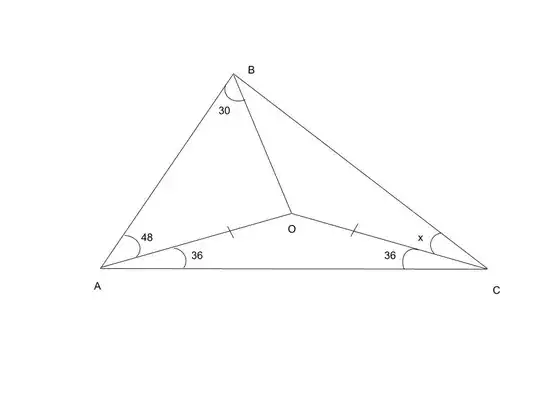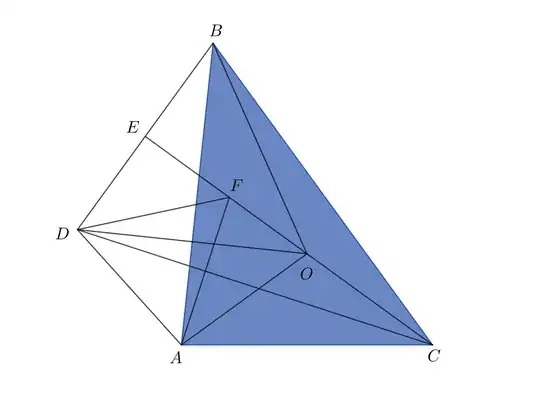I have a problem here solving this without trigonometry. We have an acute triangle. Is given the following.
 Find the $\angle$ BCO.
Find the $\angle$ BCO.
I tried different approaches. The continuation of CO intersects AB in point M, such that we get an isosceles triangle BMO. I have taken the mid-vertical of AB and found useful angles. I take P on AB such that the $\angle$ AOP = 48°. So I will get POS isosceles triangle with PO = OC and $\angle$ CPO = $\angle$ PCO = 6°. Let the intersection point of BO and CP be K. $\angle$ KOP = 18°. $\angle$ OKC = 24°. I have $\angle$ OCP, now I need to find $\angle$ BCK, to find x.
I tried other approaches also but still did not find the solution.
